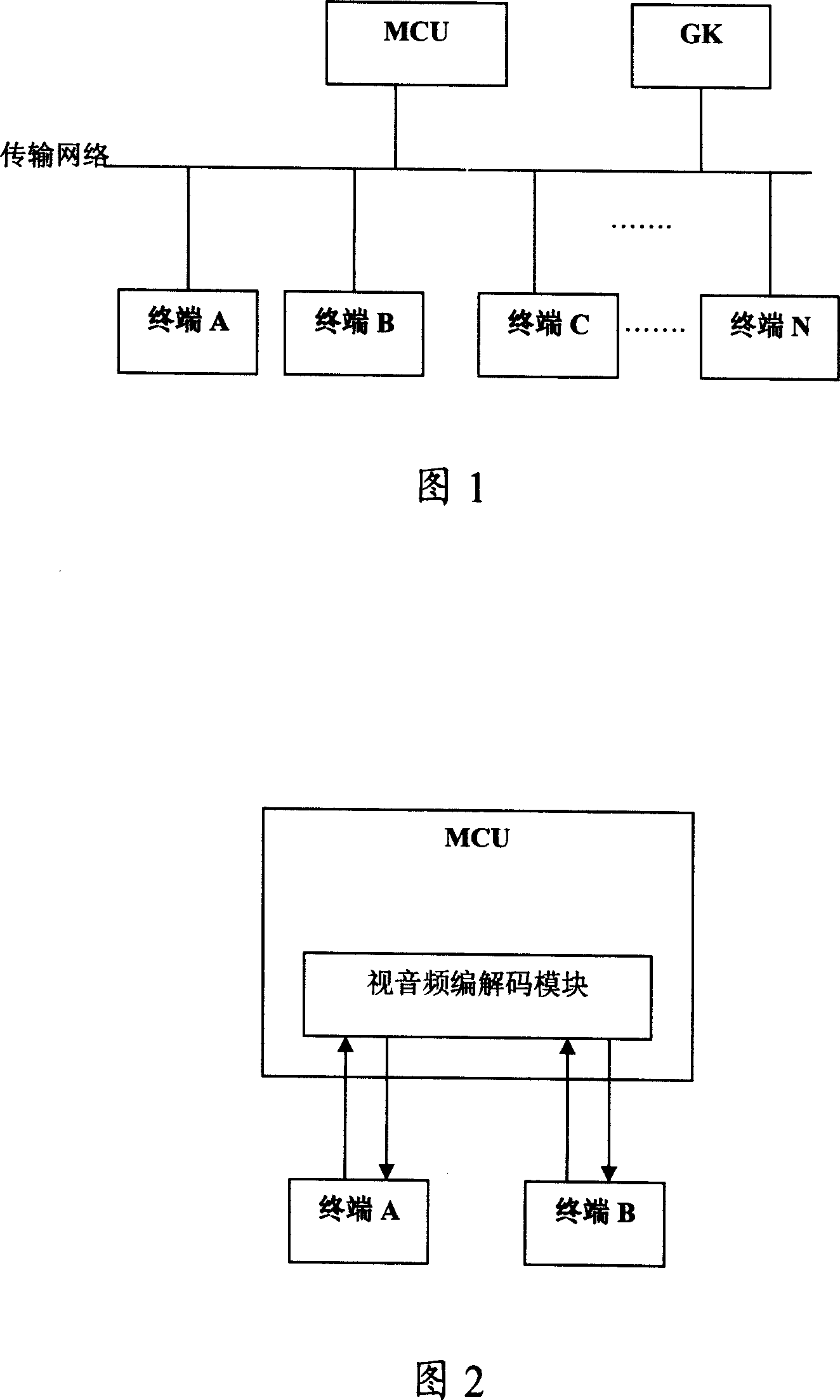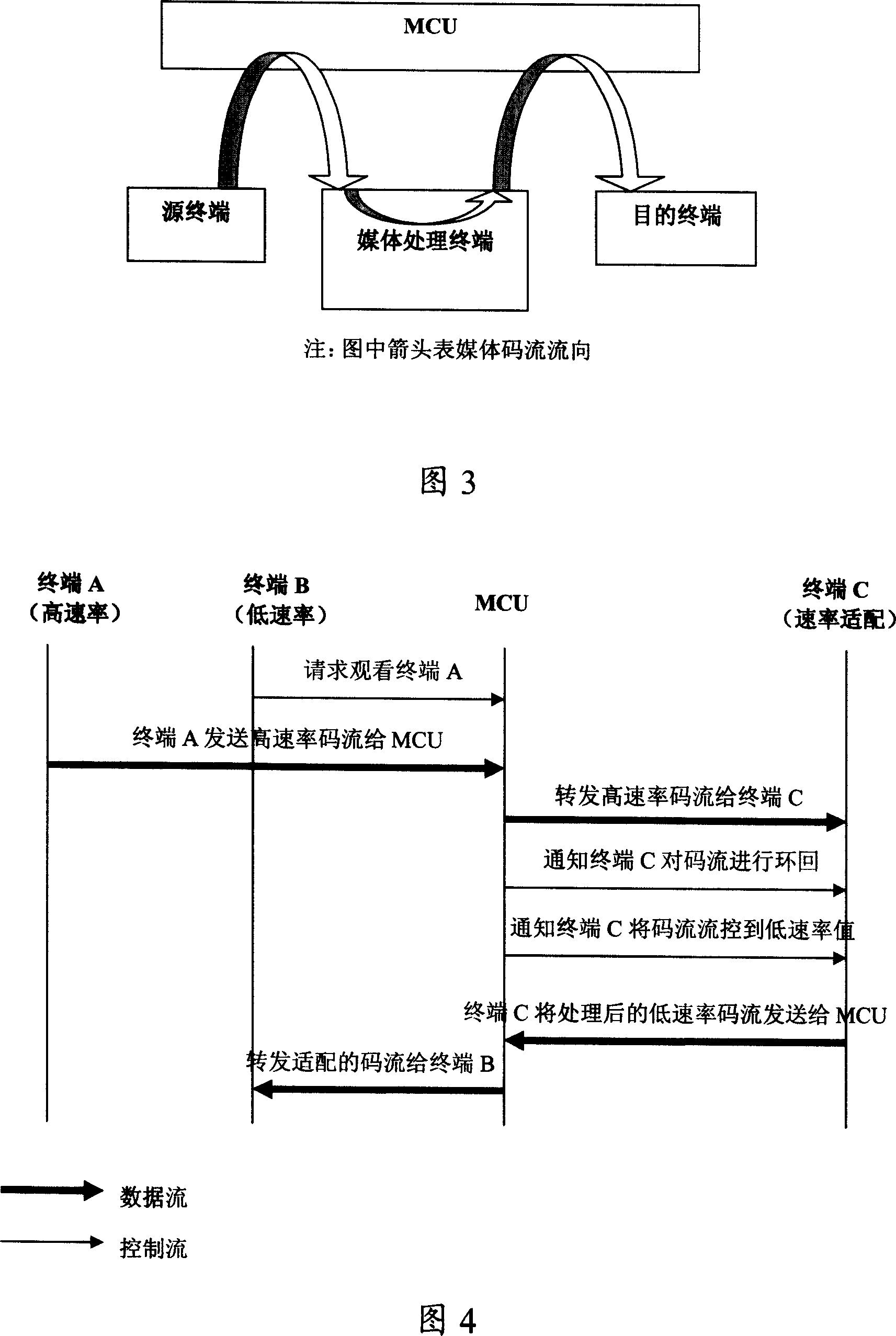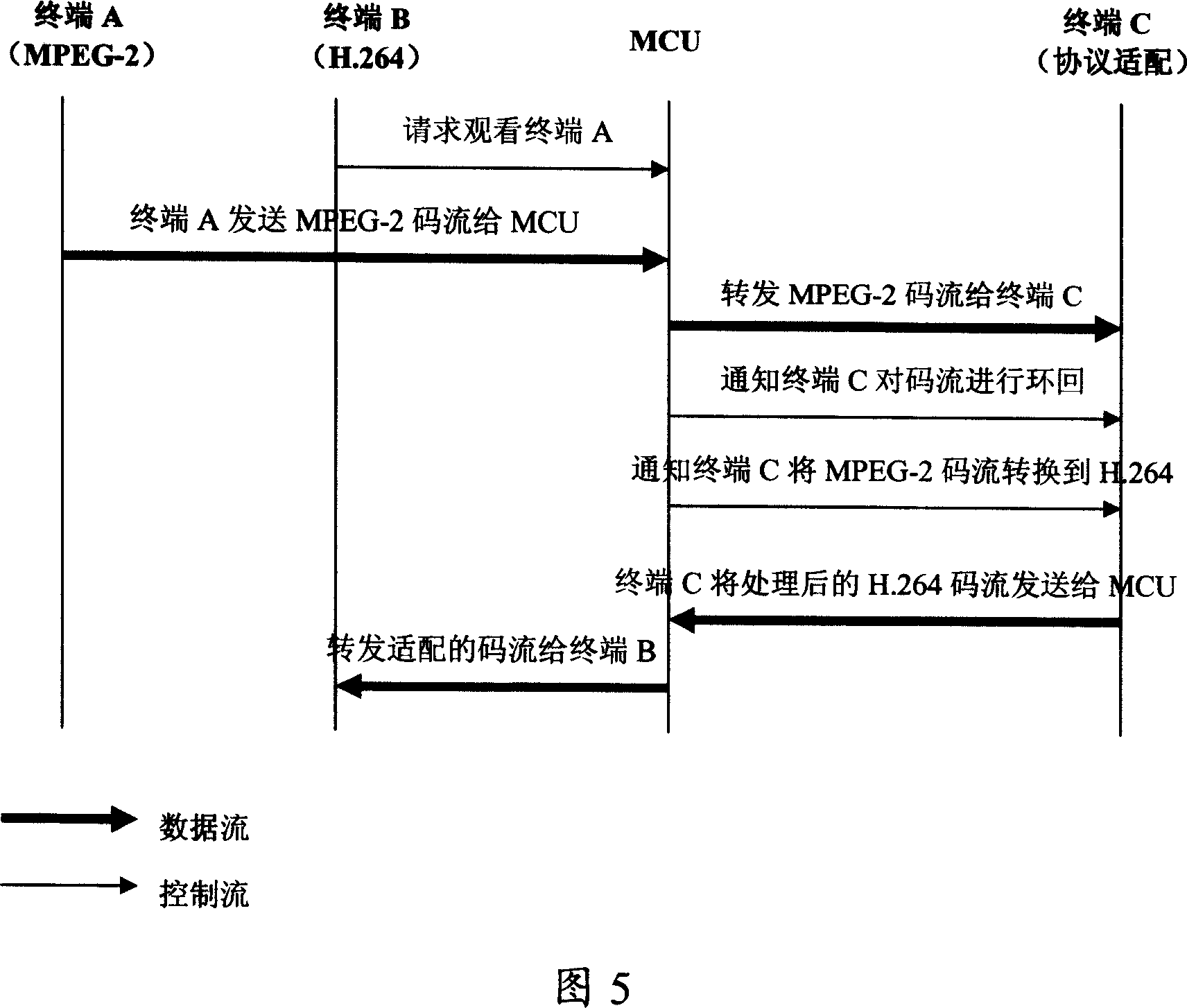Method and system for media process in multi-point conference
A multi-point conference and media technology, applied in the field of multimedia communication, can solve the problems of reduced MCU processing capacity, increased cost, poor scalability, etc., and achieves the effects of great flexibility and convenience, easy implementation, and good scalability.
- Summary
- Abstract
- Description
- Claims
- Application Information
AI Technical Summary
Problems solved by technology
Method used
Image
Examples
no. 1 example
[0059] The first embodiment: a method for realizing adaptation between different rates in a multipoint conference
[0060] As shown in FIG. 1 , a multipoint conference is held on the MCU, wherein terminal A joins the conference at a high rate, and terminal B joins the conference at a low rate. During the conference, if terminal B needs to watch the image of terminal A, the MCU needs to perform rate adaptation processing on terminal A.
[0061] When terminal A accesses a multipoint conference, the MCU records the rate value of the code stream negotiated with the capabilities of terminal A; similarly, it also records the rate value of the code stream of terminal B. In the conference operation, when the MCU needs to switch the video image of the terminal, the MCU needs to make the following judgment: if the code stream rate value of the sending source terminal is greater than the code stream rate value of the receiving terminal, then the code stream needs to be rate-adapted proc...
no. 2 example
[0071] The second embodiment: a method for realizing adaptation between different protocols in a multipoint conference
[0072] As shown in Figure 1, a multipoint conference is held on the MCU, in which terminal A joins the conference with a bit stream encoded with the MPEG-2 standard protocol, and terminal B joins the conference with a bit stream encoded with the H.264 standard protocol. During the conference, if terminal B needs to watch the image of terminal A, the MCU needs to perform encoding protocol adaptation processing on terminal A.
[0073] During the meeting process, the MCU forwards the code stream of terminal A, which needs to be adapted to the protocol, as shown in Figure 5. The specific steps are as follows:
[0074] Step 301: The MCU forwards the code stream data received from the source terminal A using the MPEG-2 standard encoding protocol to the terminal C that can provide protocol adaptation;
[0075] Step 302: At the same time, the MCU notifies the termi...
no. 3 example
[0083] The third embodiment: a method for realizing multi-screen synthesis in a multipoint conference
[0084] As shown in Figure 1, a multi-point conference is held on the MCU. During the conference, terminal N needs to watch the synthesized images of terminal A and terminal B, and the MCU does not have the function of multi-screen synthesis, but terminal C has the function of multi-screen synthesis function, the MCU needs to perform multi-screen synthesis processing on terminal A and terminal B.
[0085] During the meeting, the MCU performs multi-screen synthesis processing on the data of terminal A and terminal B, as shown in Figure 6, and the specific steps are as follows:
[0086] Step 401: The MCU forwards the received two streams of code stream data from the source terminal A and terminal B to the terminal C that can provide multi-screen synthesis;
[0087] Step 402: At the same time, the MCU notifies terminal C through control signaling, requesting terminal C to perfo...
PUM
 Login to View More
Login to View More Abstract
Description
Claims
Application Information
 Login to View More
Login to View More - R&D
- Intellectual Property
- Life Sciences
- Materials
- Tech Scout
- Unparalleled Data Quality
- Higher Quality Content
- 60% Fewer Hallucinations
Browse by: Latest US Patents, China's latest patents, Technical Efficacy Thesaurus, Application Domain, Technology Topic, Popular Technical Reports.
© 2025 PatSnap. All rights reserved.Legal|Privacy policy|Modern Slavery Act Transparency Statement|Sitemap|About US| Contact US: help@patsnap.com



